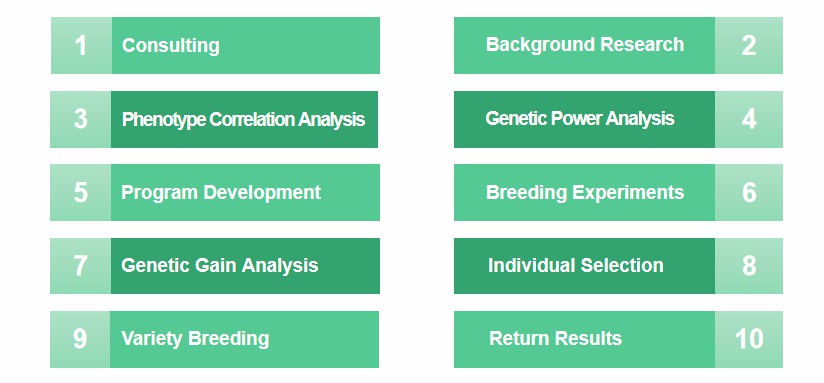
Silver birch (Betula pendula Roth.) is a fast-growing, medium-sized deciduous tree characterized by grey or yellowish-white bark and slender, drooping branches. Silver birch is distributed in Europe, China, and Western Siberia, Russia. It is an integral part of forests, and a large number of insects and fungi depend on its existence.
As one of the most commercially valuable trees in northern Europe, silver birch's wood is solid and can be used for craftsmanship and furniture, but it is perishable when damp and unsuitable for construction. At the same time, silver birch has excellent ornamental value and is a suitable tree species for afforestation and urban courtyard greening. Silver birch is often used in reforestation projects and soil conservation, so the breeding of silver birch is gaining more and more attention.
As a top plant biotechnology company, Lifeasible focuses on tree breeding, has rich experience in tree breeding, and has a complete tree breeding system. We are confident in providing global customers with satisfactory Betula pendula Roth. Breeding service, helps customers to select varieties with specific traits and improve their economic benefits.
The growing economic importance of silver birch in forestry has sparked a great deal of breeding research. Silver birch is sensitive to long-term drought and is not resistant to insect pests such as aphids and leaf miners. Hence, our breeding strategy is to increase silver birch's resistance and growth adaptability. Our Betula pendula Roth. Breeding service usually includes genetic engineering breeding, polyploid breeding, and other methods.
First, we screened the genes corresponding to the traits to be improved in silver birch according to the customer's breeding needs. The recombinant plasmids were introduced into silver birch cell receptors by different transformation methods and integrated into the chromosomes of silver birch. Thus, the expression of the target gene in the plant receptor can be obtained. Finally, the purpose of changing plant traits (such as disease resistance, insect resistance, stress resistance, etc.) and rapidly cultivating new varieties of silver birch can be achieved. Drought resistance, salt tolerance, wood property improvement, growth and development, lignin content, chlorophyll content, etc. are all silver birch breeding services hotspots.
It is an important way and method for breeding new silver birch varieties to realize the genetic improvement of multi-target traits through the comprehensive ploidy and dominance research of polyploidy breeding. We have extensive experience in silver birch polyploidy research and can produce triploid and tetraploid silver birch by artificial mutagenesis. And the research overview of silver birch breeding, induction of tetraploid silver birch, growth and photosynthetic physiological characteristics of tetraploid silver birch, flowering and fruiting characteristics of tetraploid silver birch, gene expression characteristics of tetraploid silver birch, triple There are profound insights into the determination of the mother tree of the silver birch seed garden and the decision of the progeny of the tetraploid silver birch. We can meet our customers' multiple variety improvement needs through ploidy breeding.
Hybrid breeding is a traditional and effective method of plant breeding. Our Betula pendula Roth. Hybrid breeding service can shorten the breeding cycle by forcing trees to flower under greenhouse conditions. We were able to cross the first, second, and third generation inbred lines to produce more hybrids to screen for the desired progeny.

Lifeasible's Betula pendula Roth. Breeding service is recognized. Our plant breeding scientists will develop a complete solution for all your birch breeding challenges. For questions, inquiries, or cooperation, please feel free to contact us.
References
Lifeasible has established a one-stop service platform for plants. In addition to obtaining customized solutions for plant genetic engineering, customers can also conduct follow-up analysis and research on plants through our analysis platform. The analytical services we provide include but are not limited to the following:
Get Latest Lifeasible News and Updates Directly to Your Inbox
Mechanisms Regulating Plant Chloroplast Biogenesis
April 15, 2025